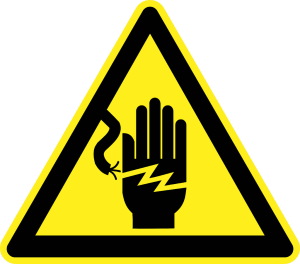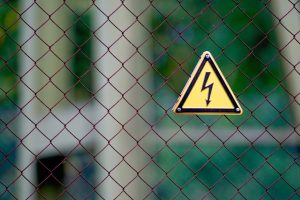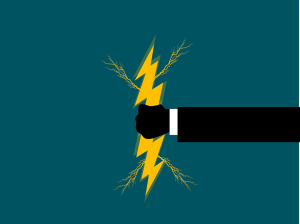Electrical Safety
Introduction
‘Electrical safety’ is a technical system of an organizational to measures to prevent harmful and dangerous effects on workers from electric current, arcing, electromagnetic fields and static electricity. Electricity can cause serious injuries as:
- Electrical shocks
- Electrical burns
- Electrocution
Human body is known as a good conductor of electricity. When any body part comes in contact with electricity, it can become a part of the circuit and that body suffers from electric shock. A current of 100 mA can easily pass through the body and leave its marks at the point of contact. A current above 10,000 mA can cause serious burns, which may be beyond treatment and require amputation.

Electrical burns mostly affect internal organs due to the heat generated by the body’s resistance to the current passing through it. This can have serious consequences and external injuries do not always show the extent of internal injury.
Definitions
Electricity: Electricity is the continuous movement of electrons in a chosen path when they are detached from the orbits of atoms under collision. The purpose of study on ‘electricity’ is to identify the risks and to take correct actions at design, installation and operations stages to ensure electrical accidents are eliminated.
Relay: Protective relay is an electrical device which is connected between main circuit and circuit breaker that detects the fault and initiate the operation of the Circuit Breaker.
Fusing Current: Fusing current is a maximum value of current at which, the fuse element melts, this disconnects the circuit.
Conductor: Conductor is a substance or material or body which allows current of electricity to pass continuously. In a conductor, electrical charge carriers usually electrons or ions, move easily from atom to atom when voltage is applied.
Alternating Current: Alternating current is an electric current which periodically reverse direction and changes its magnitude continuously with time in contrast to direct current which flows only in one direction.
Alternating current comes from thermal power stations, hydro power stations, nuclear power plant, etc. It is produced by rotating a coil or coil wound on a soft iron price called armature wire in a magnetic field. Alternating current of 50 cycles, 15 to 20 mA or more than 20 mA may cause breathing difficulty.
Direct Current: Direct current is one-directional flow of electric charge. DC may flow through a conductor such as a wire, but can also flow through semiconductors, insulators, or even through a vacuum as in electrons or ion beams.
Arc Blast: A release of mechanical, acoustical, thermal and optical energy from an electric arc.
Arc Flash: A release of thermal energy from an electric arc by the vaporization and ionization of materials, reaching temperatures up to 35,000 Deg F. Exposure of these extreme temperatures both burns the skin directly and causes ignition of clothing.
Electrical Hazards
An electrical hazard can be defined as a serious workplace hazard or Such a dangerous condition such that contact (of body), or equipment failure that exposes workers to burns, electrocution, shock, thermal burns, arc flash / arc blast, fire, or explosion.

Examples of electrical hazards are:
- Electric shock.
- Electrical burns.
- Fire from faulty wiring.
- Overloading circuits.
- Leaving electrical parts exposed.
- Electrocution or burn from lack of PPE.
- Explosions and fires from explosive and flammable substances.
- Contact with overhead power lines.
- Electrical exposure to water.
Electrical hazards exist due to:
- Careless handling of electricity.
- Improper installation (i.e., unsafe installation)
- Damaged tools and equipment.
- Improper design (i.e., selection of electrical equipment devices, inters connecting cables, etc.).
- Inadequate wiring and overloaded circuits.
- Exposed electrical parts / wires joints.
- Improper Grounding/earthing.
- Damaged Insulation.
- Wet conditions i.e., weather, spillages, etc.
Ask Questions while working with hazardous electrical work:
- Can it impact my health?
- Does it cost my lives?
- Who will you call first?
- What will your first response?
- What tools or protective equipment will you need?
- Victim (or me) be able to move for help?
Precautions

- Ensure Work Permit prior repairing / maintenance of electrical appliances or machines making circuit completely dead or isolated with proper barricading.
- Toolbox Talk to be performed by Safety Officer.
- Display Danger signboards, label, barricading, etc. at workplace, electrical equipment, bays, circuits, etc.
- LOTO to be ensured if any machine, electrical substation, etc. broke down after required intimation.
- Never act horseplay with electrical equipment / appliances.
- Avoid installation of new equipment in the service without necessary testing by authority.
- Forbid any unauthorized person to enter the working place.
- Should not work on the electrical circuits during heavy lighting, rainfall or storm.
- Always wear PPEs (i.e., Helmet, Safety Shoes, Gloves, etc.).
- Never wear armbands, metal brasslets (i.e., kadha), watch, rings, metal key chains, neck chains, jeans pant (as it has metallic zip), etc.
- Do not allow work if you find worker feel tired or exhausted.
- Never repair energize equipment, as it is considered as horseplay.
- Near miss with electrical equipment are rare. Never mess with electrical appliances.
- Never play with electrical cords, wires, switches or plugs.
- Stay away from fallen power lines and inform everyone in its vicinity.
- Never use or play with electrical equipment with or without power source.
- Check power lines nearby or above before proceeding work or play.
- Never touch electrical equipment with wet hands / body. It increases the conductivity of the electric current.
- Never hold cables of electrical appliances or equipment for lifting purpose.


